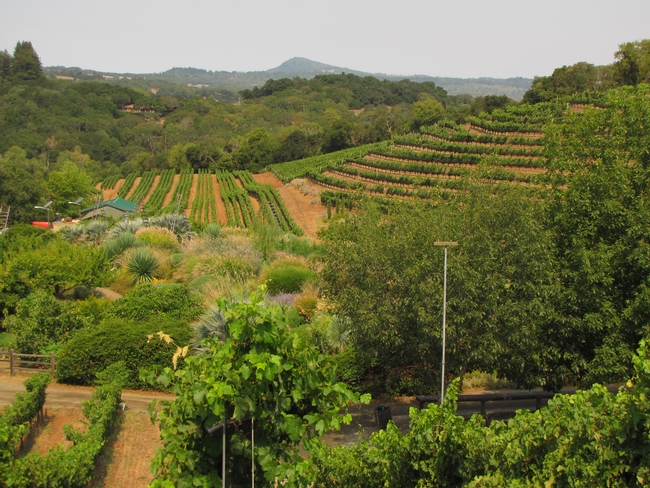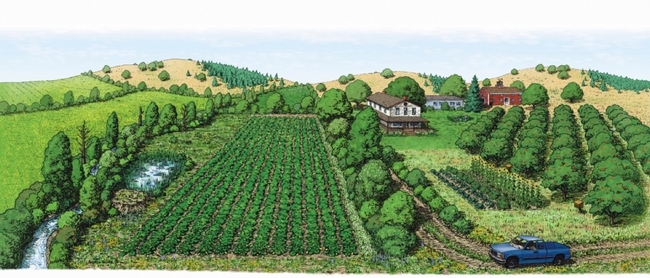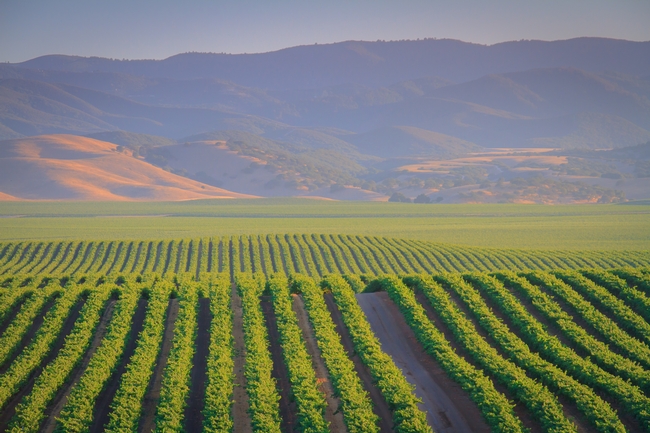Bring the wild back into our farmlands to protect biodiversity, researchers say
Berkeley — With a body the size of a fist and wings that span more than a foot, the big brown bat must gorge on 6,000 to 8,000 bugs a night to maintain its stature. This mighty appetite can be a boon to farmers battling crop-eating pests.
But few types of bats live on American farms. That's because the current practice of monoculture – dedicating large swathes of land to a single crop – doesn't give the bats many places to land or to nest.
Diversifying working lands – including farmland, rangeland and forests – may be key to preserving biodiversity in the face of climate change, says a new review paper published this week in Science by conservation biologists at the University of California, Berkeley.
Diversification could be as simple as adding trees or hedgerows along the edges of fields, giving animals like birds, bats and insects places to live, or as complex as incorporating a patchwork of fields, orchards, pasture and flowers into a single working farm.
These changes could extend the habitat of critters like bats, but also much larger creatures like bears, elk and other wildlife, outside the boundaries of parks and other protected areas, while creating more sustainable, and potentially more productive, working lands.
“Protected areas are extremely important, but we can't rely on those on their own to prevent the pending sixth mass extinction,” said study co-author Adina Merenlender, a UC Cooperative Extension Specialist in the Department of Environmental Science, Policy and Management at UC Berkeley. “This is even more true in the face of climate change, because species will need to move around to adapt to shifts in temperature and climate.”
A win-win for wildlife and for farms
Maintaining even small pieces of the original landscape – even a single tree– can help conserve the original diversity of species, Merenlender said. Clearing oak woodlands and shrublands to establish large vineyards hits many native species hard. Animals that are well adapted to urban and agricultural areas, such as mockingbirds, house finches and free-tail bats, continue to flourish, while animals that are more sensitive to disturbance, like acorn woodpeckers, orange-crowned warblers and big brown bats, begin to drop away. “If you can leave shrubs, trees and flowering plants, the habitat suitability -- not just for sensitive birds but also for other vertebrates – goes way up,” Merenlender said. This is true not only in California's vineyards, but on working lands around the world.
Incorporating natural vegetation makes the farm more hospitable to more creatures, while reducing the use of environmentally degrading chemicals like herbicides, pesticides and man-made fertilizer.
The ideal farming landscape includes woodland pastures and vegetable plots bumping up against orchards and small fields, said Claire Kremen, a professor in the Department of Environmental Science, Policy and Management. Integrating livestock produces manure which can fertilize the crops, while those same crops produce feed for livestock. Birds and bats provide pest control, and bees boost crop production by pollinating plants.
“It is possible for these working landscapes to support biodiversity but also be productive and profitable,” Kremen said. “And ultimately, this is where we have to go. We just can't keep mining our soils for their fertility and polluting our streams – in the end, this will diminish our capacity to continue producing the food that we need. Instead, we must pay attention to the species, from microbes to mammals, that supply us with critical services, like pollination, pest control and nutrient cycling”
“We have some amazing diversified farms, sustainably managed forests and species-rich rangelands here in California that exemplify working lands for conservation around the world,” Merenlender said. “We are calling for a scaling up of this approach around the world, and to do that we champion community-based action and more supportive polices” Kremen concludes.
RELATED INFORMATION
CONTACTS
Claire Kremen, ckremen@berkeley.edu, 510-367-2100 (cell)
Adina Merenlender, adinam@berkeley.edu, (707) 489-4362
Comments:
http://www.helpabee.org/




Posted by John Schoustra on November 26, 2018 at 10:36 AM